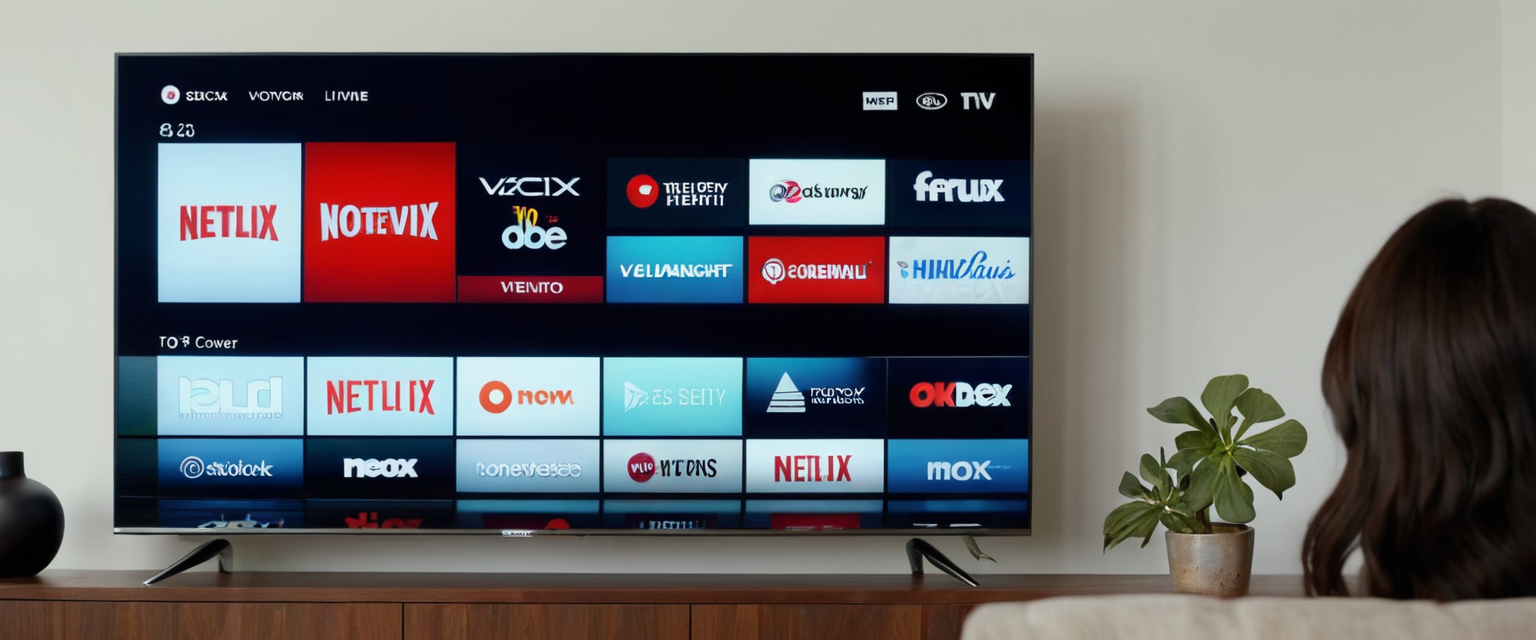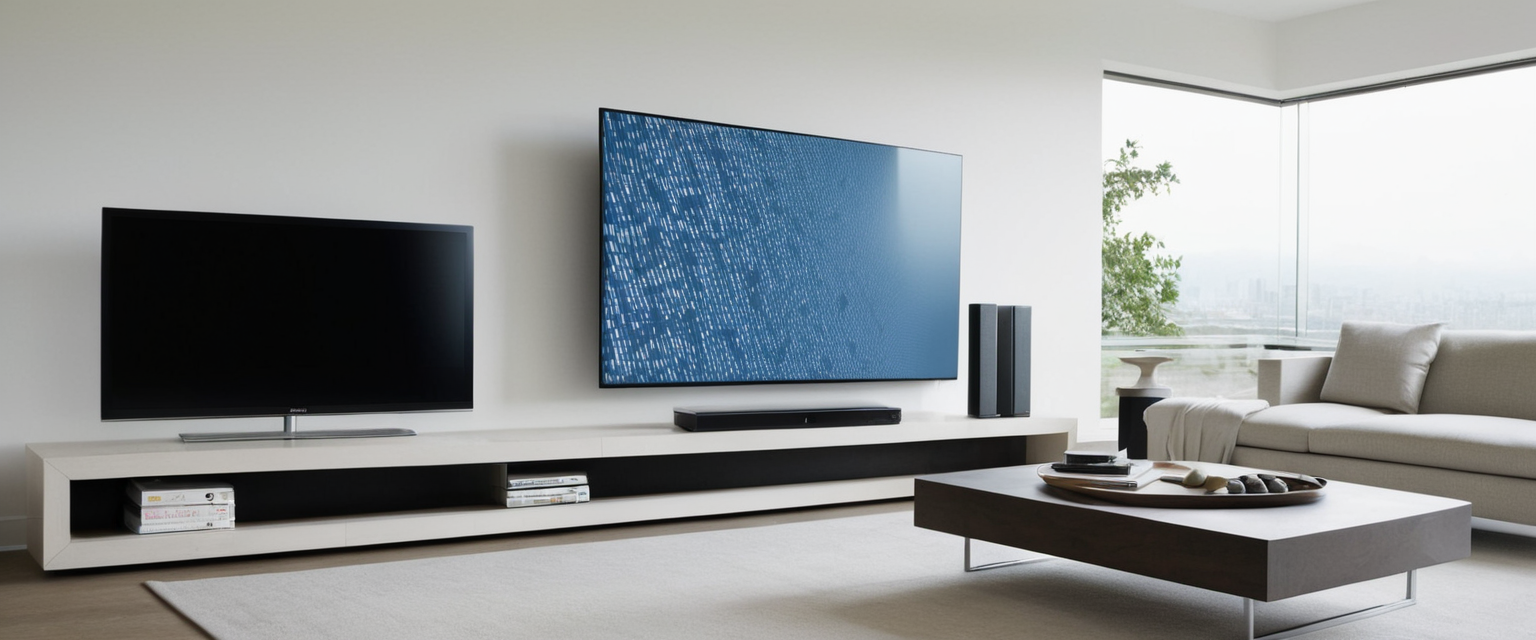
Smart televisions have fundamentally transformed the landscape of home entertainment, yet they simultaneously introduce unprecedented privacy vulnerabilities into residential environments. Most modern smart TVs incorporate advanced surveillance capabilities, including built-in cameras and microphones designed for convenience features such as video conferencing, gesture control, and voice commands, but these same technologies can be exploited for unauthorized data collection and monitoring. The prevalence of Automatic Content Recognition (ACR) technology, combined with camera and microphone vulnerabilities, creates a multifaceted privacy crisis that demands comprehensive understanding and systematic mitigation. This report examines the technical architecture of smart TV surveillance systems, identifies which devices contain cameras, analyzes the data collection mechanisms employed by manufacturers, and provides detailed guidance on disabling privacy-invasive features across major television brands while also addressing alternative protective strategies.
The Prevalence and Distribution of Cameras in Smart Television Systems
The presence of built-in cameras in smart televisions has become increasingly common across the industry, though their distribution varies significantly by manufacturer and model tier. Understanding which televisions contain cameras represents the critical first step in developing an effective privacy protection strategy. Not all smart TVs are equipped with cameras, and this variation depends largely on the intended use cases and target market segments for specific models. High-end models designed explicitly for video conferencing, business meetings, and interactive applications tend to incorporate cameras as standard features, while budget-friendly streaming-focused models frequently omit this hardware entirely.
Samsung has emerged as a significant manufacturer of TVs with integrated cameras, particularly in its premium and mid-range offerings. The Samsung F Series represents one of the most notable examples of deliberate camera integration, featuring a visible lens that retracts and extends to provide variable coverage. When not in use, these cameras can be physically retracted inward, offering a mechanical privacy control that owners can manually verify. However, this mechanical functionality does not prevent potential remote activation through compromised firmware or exploited vulnerabilities. LG similarly incorporates cameras into select models across its webOS platform, particularly those marketed for video calling capabilities and smart home integration. The company positions these cameras as enablers for enhanced user experiences through facial recognition features that adjust television settings based on viewer identification and engagement patterns.
Sony televisions represent another major category of camera-equipped devices, particularly those leveraging gesture control features and video communication capabilities. The gesture recognition functionality requires camera-based optical tracking to detect user movements and hand signals, necessitating the presence of sophisticated imaging sensors positioned to capture the viewing area effectively. Hisense manufactures a mixed portfolio of models, with higher-end units such as their ULED series and laser TV models incorporating cameras, while budget-conscious lines like the U8H, U7H, A6H, and R series models deliberately omit this feature to appeal to privacy-conscious consumers. Conversely, Roku OS-based televisions typically do not include built-in cameras, with the manufacturer deliberately designing its streaming-focused interface to exclude this hardware component. This distinction represents a strategic choice emphasizing simplicity and privacy over advanced interactive features.
To identify whether a specific television contains a camera, consumers can employ three primary methodologies. Consulting the device’s user manual provides authoritative information about hardware specifications, with most manufacturers clearly documenting camera presence and technical characteristics. Physical inspection of the television bezel, particularly the top frame area, can reveal camera lenses that may appear as small circular optical elements sometimes concealed behind retractable shutters. Modern smart home applications, such as the Google Home or manufacturer-specific companion apps, may also display device capabilities and hardware features, though this information should be verified through manual inspection and official documentation rather than relying solely on app reporting, which may contain inaccuracies.
Automatic Content Recognition and Manufacturer-Level Data Collection Architecture
Beyond the immediate threat posed by physical cameras and microphones, the pervasive implementation of Automatic Content Recognition technology represents a more insidious form of smart TV surveillance that operates independently of camera functionality. ACR functions as a software-based content recognition system that continuously monitors everything displayed on the television screen by capturing and analyzing audio fingerprints and visual data without requiring explicit user awareness or consent. This technology operates as a fundamental component of the data collection infrastructure embedded within modern televisions, functioning to create comprehensive records of viewer behavior that manufacturers subsequently monetize through advertising partnerships and data broker relationships.
The technical mechanism of ACR involves the television constantly recording audio signals from whatever broadcasts or content streams through the device, then comparing these audio samples against extensive databases maintained by ACR providers to identify precise content, including the exact show, time, and duration of viewing. Modern ACR systems employ sophisticated neural networks and machine learning algorithms to match content with unprecedented accuracy, even when audio quality is compromised or transmission is degraded. The system captures not only what viewers intentionally watch through streaming services like Netflix and Amazon Prime Video, but also personal content displayed on the screen including security camera feeds, personal photo slideshows, and media cast from connected devices. This comprehensive capture creates a detailed behavioral profile that extends far beyond traditional television metrics, encompassing the complete spectrum of information presented through the television’s display system.
LG television systems implement ACR through partnerships with companies like Alphonso, which the company designates as specialized television data collection entities. The viewing information collected through these systems flows to both LG and its data partners, who then utilize this intelligence for personalized advertisement targeting and content recommendation algorithms. Samsung employs Viewing Information Services as its ACR mechanism, which similarly collects comprehensive data about viewer behavior and shares this information with third-party partners for monetization purposes. Sony televisions incorporate Samba Interactive TV as their ACR provider, a specialized company focused on aggregating viewing data from diverse television platforms and analyzing population-level entertainment consumption patterns. The data collected through these mechanisms has historically commanded substantial monetary value, with manufacturers and their partners generating significant revenue by selling this information to advertisers seeking to understand consumer preferences and target marketing campaigns more effectively.
The legal and ethical implications of ACR have become increasingly contentious as consumer awareness grows. Vizio, a major television manufacturer, faced substantial regulatory consequences when its practices came to light, resulting in a $2.2 million settlement with the Federal Trade Commission in 2017 for tracking viewer habits and selling this data to advertisers without obtaining explicit user consent. The FTC investigation revealed that Vizio had engaged in systematic collection of detailed viewing information that could be linked to specific households through IP addresses, enabling advertisers to identify who watched particular content and tailor marketing messages accordingly. This settlement established important precedent regarding manufacturer obligations to transparently disclose ACR practices, though subsequent investigations and regulatory actions suggest that similar practices continue across the industry despite heightened scrutiny.
Camera and Microphone Vulnerabilities and Cybersecurity Threats
Beyond legitimate data collection by manufacturers, smart televisions with integrated cameras and microphones present profound security vulnerabilities that can enable unauthorized remote surveillance by malicious actors. The Federal Bureau of Investigation has explicitly warned consumers about these risks, noting that compromised smart televisions can provide hackers with gateway access to home networks and enable covert surveillance of household activities. Hackers can potentially activate television cameras remotely to observe activities in the viewing area, facilitate blackmail through compromising images, or identify opportune moments for physical theft by determining when homes are unoccupied.
The technical vulnerabilities enabling these threats stem from multiple sources. Smart televisions often run operating systems derived from Android and other mobile platforms that were designed for devices with substantially different security models and update cycles. Manufacturers typically provide security patches for only two to three years after device launch, after which vulnerabilities remain unpatched and available for exploitation for the device’s remaining operational lifespan. The CIA-developed tool “Weeping Angel,” details of which were publicized through WikiLeaks in 2017, explicitly demonstrated the feasibility of remote television surveillance through sophisticated exploitation of Samsung smart TV microphones and cameras. This tool employed a fake “off” mode that convinced users their televisions were powered down while continued recording audio through built-in microphones.
Communication vulnerabilities between remote controls and smart televisions represent another significant attack vector that researchers have systematically documented. Recent analysis by UNSW Canberra researchers revealed that the communication between remote controls and televisions lacks robust protective mechanisms, enabling attackers to intercept control signals and potentially extract sensitive information including Wi-Fi credentials and user preferences. The researchers developed the “EVILSCREEN” testing methodology to comprehensively assess smart TV security, which they employed to evaluate popular brands including Samsung, TCL, and Hisense, revealing varying vulnerabilities in Wi-Fi provisioning and remote control binding protocols. Through remote control signal hijacking, attackers could capture screenshots of content displayed on televisions, including sensitive personal information entered through on-screen keyboards such as account credentials and payment information.
Network-level attacks represent yet another category of vulnerability affecting smart televisions. In 2017, researchers demonstrated the feasibility of using radio signals to exploit weaknesses in smart television web browsers, enabling attackers to embed malicious code through rogue broadcast signals that remote viewers could then execute to seize control of television displays across entire geographic regions. This attack methodology bypassed local network security entirely, instead targeting the inherent insecurity of browser implementations embedded within television operating systems. Such attacks could enable malicious actors to display fraudulent content, redirect users to phishing sites, or transform televisions into components of botnet infrastructure used for distributed denial-of-service attacks against external targets.

Disabling Automatic Content Recognition Across Major Television Platforms
Disabling ACR functionality represents the most impactful single action consumers can undertake to reduce smart television data collection, though implementation procedures vary significantly across different manufacturer platforms and often require navigating complex menu structures deliberately obscured within extensive settings hierarchies. The underlying principle remains consistent across all platforms: consumers must locate and explicitly refuse privacy agreements that authorize ACR data collection, though this process demands careful attention to manufacturer-specific terminology and menu navigation patterns.
Samsung televisions implement ACR controls through their proprietary Tizen operating system, with the exact implementation varying between 2025 models and earlier hardware generations. On contemporary Samsung models, consumers should access the television’s home screen by pressing the designated button on their remote control, then navigate to Menu > Settings > All Settings, followed by General & Privacy > Terms & Privacy. Within this menu structure, users will encounter the critical setting titled “Viewing Information Services,” which represents Samsung’s proprietary ACR technology implementation. Users can explicitly decline this service by unchecking the corresponding box, which will prevent Samsung from continuously monitoring and recording the content displayed on the television screen. The same process allows users to disable “Interest-Based Advertisements,” which prevents Samsung from utilizing collected viewing data to target personalized advertising content to the household. Samsung television models manufactured before 2020 employ different menu navigation pathways; these older devices require accessing Settings > Support > Terms & Policy, then selecting SyncPlus and Marketing, where users can locate the option to disable ACR functionality and Voice Recognition Services.
LG television systems employing the webOS operating system present a more complex menu structure for ACR management, partly because LG deliberately partners with external data collection firms rather than implementing proprietary systems. On contemporary LG models, users should access Settings by pressing the designated button on their remote, then proceed to All Settings > Support > Privacy & Terms > User Agreements. Within this interface, users will discover multiple agreement categories affecting data collection practices. The “Viewing Information Agreement” directly corresponds to LG’s ACR implementation; users should locate this specific agreement and explicitly deselect it to disable continuous content monitoring. Importantly, LG’s documentation reveals that disabling Viewing Information will simultaneously disable voice control functionality, as these features share underlying infrastructure. Beyond the Viewing Information Agreement, consumers should also disable the “Interest-Based Advertisement Agreement,” “Data Partners Agreement,” and “Marketing Communications Agreement” to comprehensively prevent other data collection and sharing arrangements. For LG television models manufactured before 2020, the navigation pathway differs slightly; these devices require accessing Settings > General > Live Plus, where users can toggle ACR functionality directly without navigating through extensive agreement hierarchies.
Protect Your Digital Life with Activate Security
Get 14 powerful security tools in one comprehensive suite. VPN, antivirus, password manager, dark web monitoring, and more.
Get Protected NowSony televisions using the Google TV platform represent a hybrid implementation scenario where consumers must manage both Google’s native data collection systems and Sony’s partnership with Samba TV, a specialized ACR provider. During initial setup of Google TV systems, Sony presents a “Bravia privacy policy” screen that covers Samba TV’s ACR technology; consumers can choose to decline this policy rather than accepting it as part of the default setup process. For televisions already installed and configured, users should access Settings > All Settings, then navigate to the Privacy menu where they will discover the “Samba Interactive TV” option. Clicking on this option provides access to Samba TV’s terms of service documentation, and users can toggle Samba Interactive TV completely off to disable ACR functionality. Additionally, Sony televisions collect Google’s native diagnostic and advertising data independent of Samba TV; users should access Settings > Privacy > Ads to reset or delete their advertising identifier, which diminishes the effectiveness of targeted advertising campaigns. Older Sony models with Samba TV employ slightly different navigation pathways; these devices require accessing Settings > System Preferences > Samba Interactive TV, where the toggle feature enables direct ACR disablement.
Roku OS-based televisions offer comprehensive privacy controls integrated into a unified Settings > Privacy menu structure that consolidates multiple data collection management options. Users should navigate to Settings > Privacy, where they will discover options including “Smart TV Experience,” which controls ACR functionality through the “Use Info From TV Inputs” setting. Unchecking this specific option disables Roku’s content recognition system, preventing the continuous monitoring of displayed content. The same Privacy menu contains additional options for “Personalize Ads” and “Microphone Access,” which users should disable to prevent targeted advertising based on inferred preferences and to prevent voice data collection respectively. Roku OS simplifies privacy management compared to competing platforms by consolidating most data collection controls into this single menu hierarchy, making the process more transparent and accessible to non-technical users.
Vizio television systems present a relatively straightforward ACR disabling process, though the exact implementation varies between SmartCast-based newer models and older VIA platform televisions. For contemporary Vizio models utilizing the SmartCast system, users should access the Settings menu and navigate to All Settings > Admin & Privacy, then locate the “Viewing Data” option and use the onscreen toggle to disable it completely. This action prevents Vizio from collecting and analyzing the content displayed on the television through ACR technology. Users should also navigate to the “Advertising” menu within Admin & Privacy to toggle off “Ad Replacement” and enable “Limited Ad Tracking” to prevent targeted advertising derived from behavioral data. For Vizio televisions manufactured before 2020, which employ the VIA operating system, users should access System > Reset & Admin, then locate “Smart Interactivity” and use the right arrow on their remote control to disable it completely. These older models may also reference the disabled feature as “Automatic Content Recognition” rather than using Vizio’s newer terminology.
Amazon Fire TV devices represent a distinct category of streaming platform rather than full-featured televisions, but many households integrate Fire TV sticks or Fire TV-enabled televisions as primary streaming solutions. These devices employ Fire OS rather than Android TV or Tizen, but still implement comprehensive data collection through multiple mechanisms. Users can disable ACR-equivalent functionality by accessing Settings > Preferences > Privacy Settings, where they should disable “Collect App and Over-the-Air Usage,” “Device Usage Data,” and “Interest-Based Ads.” Notably, Fire TV 2025 models introduce a new “Manage Sharing From Apps” option that prevents third-party applications from transmitting viewing data to Amazon; users should disable this setting to prevent app-level data collection independent of Amazon’s native systems. Additionally, users can reset their advertising identifier through this same menu, which effectively generates a new tracking token and diminishes the correlation of new viewing data with historical behavioral profiles.
TCL televisions utilizing Google TV or Android TV platforms require navigation to Settings > Privacy > User Agreements, where users should locate and withdraw consent from the “User Experience Improvement Program,” which constitutes the manufacturer’s ACR implementation. The specific menu locations vary depending on whether the television employs Google TV or the older Android TV platform, but the fundamental principle remains consistent: users must find the agreement authorizing content tracking and explicitly revoke their consent. Google TV systems on TCL devices also present opportunities for managing Google’s native advertising data through Settings > Privacy > Ads, where the advertising identifier can be reset.
Microphone and Camera Disablement Protocols by Manufacturer
Beyond disabling ACR, comprehensive privacy protection requires directly disabling camera and microphone hardware functionality where technically feasible, as these components represent vulnerability vectors independent of manufacturer data collection practices. While complete hardware disablement may not be technically possible on all television models, most manufacturers provide software mechanisms to disable these devices, and physical covering represents a failsafe approach recommended even by federal law enforcement agencies.
Samsung televisions provide multiple layers of microphone and camera control across their product lineup. On newer Samsung models, users can access Settings > General & Privacy > Voice to manage voice recognition services provided by third parties including Alexa and Bixby. Within this interface, users can explicitly withdraw consent for voice services, preventing the microphone from continuously listening for activation commands. Some Samsung television models manufactured between 2020 and 2022 include a dedicated physical microphone switch located on the television’s underside, typically near the bottom right corner, which consumers can physically toggle to disable microphone functionality at the hardware level. For Samsung television models featuring cameras, particularly those with retractable designs like the F Series, users should ensure the camera remains in the retracted position when not actively using video communication features; these mechanical systems provide physical verification of camera disablement that cannot be remotely overridden through compromised firmware.
LG television cameras can typically be disabled through Settings > General > Live Plus for older models, or Settings > All Settings > General for newer webOS systems. The “Live Plus” menu contains toggles for disabling camera functionality specifically. However, many LG camera implementations cannot be completely disabled through software; in these instances, physical covering with opaque tape or specialized camera covers provides the only reliable protection against potential remote activation through security vulnerabilities.
Sony televisions using Google TV or Android TV platforms allow camera and microphone disablement through Settings > Device Preferences > Privacy or Settings > System > Privacy, depending on the specific model and software version. Within the Privacy menu, users can toggle off both “Camera” and “Microphone” permissions to prevent applications and system functions from accessing these hardware components. Additionally, the gesture control feature on Sony televisions specifically utilizes the camera; users not requiring gesture-based remote control should disable this functionality through Settings > Device Preferences > Gesture or the equivalent menu path, which will prevent the camera from constantly monitoring the viewing area for hand movements.
Hisense television models with built-in cameras allow disablement through Settings > System > Privacy, where users can navigate to camera options and toggle the feature to disable camera functionality completely. For Hisense televisions without explicit camera disablement options through the settings menu, physical covering remains the recommended approach.
The FBI explicitly recommends physically covering television cameras with opaque black tape or specialized privacy covers as a failsafe protection mechanism that cannot be circumvented through remote exploitation or compromised firmware. The FBI’s recommendation emerged after comprehensive analysis of camera hijacking vulnerabilities, recognizing that software-only disablement may not provide absolute assurance against creative exploitation techniques. This approach proves particularly important for households with televisions manufactured more than three years ago, as manufacturers have ceased providing security patches for these devices and known vulnerabilities remain unpatched and available for exploitation. Specialized camera privacy covers designed specifically for laptop webcams can typically be applied to television cameras with minor adaptation, though simple opaque tape remains equally effective and costs essentially nothing.
Network-Level Protection Mechanisms and Advanced Security Architecture
Beyond device-level controls, comprehensive smart television privacy protection requires implementing network-level restrictions that limit the television’s ability to communicate with external servers used for data collection and surveillance infrastructure. Network segmentation through Virtual Local Area Network (VLAN) technology provides sophisticated households with granular control over television network access, restricting the device’s communications to essential streaming and update functions while blocking attempts to reach advertising and data collection endpoints.
Creating a dedicated television VLAN involves configuring the home router to segregate network traffic so that the television operates on a distinct subnetwork isolated from personal computing devices, sensitive data repositories, and internal home network infrastructure. This isolation prevents compromised televisions from accessing stored files, credentials, or other sensitive information on network-connected computers or storage systems. The implementation process begins by accessing the router’s administrative interface and locating VLAN configuration options, typically found under “Network Settings” or “Switch Configuration” sections for routers supporting advanced networking features. Users should create a new VLAN specifically designated for the television, assigning it a unique VLAN identifier such as VLAN ID 3 and descriptive name such as “TV” for future reference. The television should be connected to a specific physical port on the router that is configured as “untagged” for this VLAN, while the router’s CPU port remains “tagged” to enable traffic routing to external networks.
Firewall rules layered on top of VLAN segmentation provide additional control over the television’s network behavior by restricting outbound connections to specific destinations. These rules allow the television to access legitimate streaming services and manufacturer update servers while blocking connections to known data collection endpoints and advertising infrastructure. A comprehensive firewall policy for television traffic should permit Domain Name System (DNS) and Dynamic Host Configuration Protocol (DHCP) communications to the router itself, enabling the television to resolve domain names and obtain IP address assignments while preventing direct access to other network resources. All other traffic originating from the television VLAN destined for devices outside the VLAN should be blocked through explicit rejection rules, effectively preventing the television from communicating with personal computers, network storage devices, or other sensitive systems. Specialized domain blocking through DNS-level filtering can further enhance protection by preventing the television from reaching advertising servers, analytics platforms, and known data collection infrastructure even if the television attempts to access these services.
Virtual Private Network (VPN) router implementations represent an alternative approach to network-level television protection, though they provide less granular control than VLAN-based segmentation. Installing VPN firmware on home routers such as ExpressVPN Aircove or configuring manual VPN implementations provides all connected devices, including smart televisions, with encrypted network connections that obscure browsing activity and other communications from internet service providers and potentially from television manufacturers attempting to identify device locations for targeted content delivery. VPN encryption prevents observation of television communications at the network level, though it does not prevent the television from collecting and storing data locally or from accessing manufacturer infrastructure if connection credentials are embedded within the television’s firmware.

Security Patch Management and Software Update Protocols
Maintaining current security patches and firmware updates represents a critical component of smart television security architecture, despite manufacturers’ historically poor track records in providing timely updates to address identified vulnerabilities. Firmware updates often contain security fixes addressing known exploitation techniques, though manufacturers frequently prioritize new features over security improvements and may delay patches for budget-oriented television models entirely. The Dutch Consumers’ Association successfully demonstrated through litigation that manufacturers have no legal obligation to provide more than two years of security updates, after which devices become permanently vulnerable to known exploits.
Users should manually check for available firmware updates on televisions more than one year old, as manufacturers may not automatically notify users about security patches or may wait extended periods before deploying updates to devices. Most television platforms include automatic update checking mechanisms, but these should be explicitly enabled rather than left in default states. Users can access firmware update functions through Settings > Support > Software Update or equivalent paths depending on the manufacturer and operating system version. When security patches become available, users should install them promptly despite temporary service interruptions, as vulnerabilities present during the postponement window represent active exploitation risks. However, users should recognize that this security maintenance approach provides limited utility for televisions manufactured more than three years ago, as manufacturers have ceased providing patches entirely and accumulated vulnerabilities cannot be remediated through software updates.
Alternative Streaming Solutions and Privacy-Respecting Television Configurations
For consumers prioritizing privacy protection over the convenience offered by smart television features, several alternative approaches provide substantially improved privacy characteristics while retaining streaming capabilities and modern entertainment functionality. These alternatives typically involve disconnecting the television from the manufacturer’s data collection infrastructure entirely and instead routing all content delivery through separate streaming devices that consumers can manage and update independently.
Dedicated streaming devices such as the NVIDIA Shield TV Pro provide substantially better privacy protections than integrated smart televisions because these devices operate on open-source Android TV implementations that consumers can modify extensively and receive more frequent security updates than manufacturers typically provide. The NVIDIA Shield TV Pro specifically offers full access to the Android operating system, enabling users to sideload custom applications, disable manufacturer tracking infrastructure, and implement comprehensive privacy protections through granular permission management. Alternative streaming devices such as Google TV Streamers, Roku Streaming Sticks, and various Android-based streaming boxes provide different balances between privacy and convenience, though all offer substantially superior privacy controls compared to integrated smart television systems. Apple TV represents the most privacy-respecting mainstream streaming device option due to Apple’s strong privacy positioning across its product ecosystem, though Apple TV devices command substantially higher prices than competing alternatives and offer limited sideloading capabilities compared to Android-based systems.
For technically proficient users, Linux-based media center systems such as Kodi or Plex on dedicated hardware provide maximum control and privacy protection, though these solutions demand substantial technical expertise to configure and maintain effectively. Users employing these approaches can configure devices to never transmit usage data externally, implement comprehensive network filtering, and customize every aspect of their entertainment ecosystem to align with privacy requirements. However, such implementations may introduce complexity that limits their appeal to non-technical households.
The privacy-optimal approach involves purchasing an inexpensive non-smart television displaying only broadcast or cable signals, then connecting a separate streaming device that the user can manage, update, and configure independently from the television manufacturer. This approach eliminates the television manufacturer’s role in the surveillance chain entirely, leaving only the streaming device platform provider as a potential data collection point. Users can then apply all device-level and network-level protections to the streaming device while completely avoiding smart television vulnerabilities. While this approach requires purchasing a separate device, the cost remains marginal compared to the price of contemporary smart televisions, and the added complexity of managing multiple devices often proves acceptable when compared to accepting comprehensive surveillance by television manufacturers.
Regulatory Context and Consumer Advocacy Developments
The regulatory landscape surrounding smart television privacy has begun to shift as government agencies and consumer advocacy organizations increasingly recognize the scope and severity of surveillance practices embedded within these devices. The Federal Trade Commission’s enforcement action against Vizio, resulting in a $2.2 million settlement, established important precedent regarding manufacturer obligations to disclose data collection practices and obtain meaningful consumer consent. However, this enforcement action represents an exception rather than typical regulatory behavior, suggesting that most manufacturers continue implementing data collection practices despite heightened awareness of regulatory risks.
The FTC’s Vizio settlement explicitly addressed tracking of viewing habits and subsequent sale of this information to advertisers and data brokers without obtaining explicit user authorization. The settlement obligated Vizio to clearly disclose data collection practices and provide consumers with opt-out mechanisms, though significantly these requirements did not prevent future data collection entirely, only requiring companies to disclose practices and respect consumer choices when explicitly exercised. The existence of this settlement demonstrates that manufacturers recognize the legal vulnerability of their surveillance practices, yet the limited scope of the settlement suggests that regulatory consequences remain insufficient to deter widespread data collection across the industry.
Consumer advocacy groups including Consumer Reports have undertaken independent investigations documenting smart television surveillance practices and testing the effectiveness of manufacturer-provided privacy controls. These investigations consistently reveal that complete privacy protection remains impossible while televisions remain connected to the internet, though disabling ACR and related data collection features substantially reduces exposure to data collection practices. Consumer Reports testing found that many manufacturers deliberately obscure privacy settings within complex menu structures, presumably to discourage consumers from discovering and utilizing these controls. The organization has called for increased regulatory requirements mandating clear, accessible privacy controls and longer security support lifecycles, though these recommendations have not yet translated into concrete regulatory mandates in most jurisdictions.

Comprehensive Privacy Protection Strategy Synthesis and Practical Implementation
Achieving meaningful privacy protection for smart television systems requires implementing multiple overlapping defense mechanisms rather than relying on any single technical control, as each approach addresses distinct vulnerability vectors and potential attack scenarios. A comprehensive privacy protection strategy should encompass device-level controls, network-level restrictions, and thoughtful consideration of alternative device architectures that fundamentally reduce surveillance exposure.
At the device level, consumers should immediately disable ACR functionality through the manufacturer-specific procedures documented earlier in this analysis, as this addresses the largest and most systematic data collection mechanism embedded within modern televisions. Disabling ACR eliminates the continuous monitoring of displayed content and prevents manufacturers from monetizing viewing behavior data through advertising partnerships and sales to data brokers. Simultaneously, consumers should disable microphone and camera functionality through available software controls, and where software disablement is not possible, apply physical coverings using opaque tape to prevent potential remote activation through security vulnerabilities.
Network-level protections should implement either VLAN-based segmentation or VPN-based encryption depending on the technical sophistication of the household and the importance of privacy relative to network management complexity. VLAN-based approaches provide superior granular control but demand more extensive router configuration expertise, while VPN-based solutions provide simpler implementation at the cost of less flexible filtering capabilities. Both approaches substantially reduce the ability of manufacturers and malicious actors to intercept television communications or conduct network reconnaissance.
Firmware maintenance should prioritize installing security patches within weeks of release rather than delaying or skipping updates entirely, despite the temporary service interruptions associated with update installation. However, users should recognize that firmware maintenance provides limited utility for televisions beyond their manufacturer support lifecycle, and devices older than three years should be considered permanently vulnerable to exploitation regardless of patch status. For these legacy devices, network-level isolation becomes increasingly important as a compensating control.
For maximum privacy protection, consumers should consider replacing televisions approaching end-of-support with inexpensive non-smart models combined with independently managed streaming devices, effectively removing the television manufacturer from the surveillance chain entirely. This approach accepts somewhat higher capital expenditure in exchange for substantially improved long-term privacy protections and simplified security management.
Ensuring Your Smart TV’s Camera Stays Dark
Smart televisions incorporating cameras and comprehensive data collection mechanisms represent a fundamental conflict between convenience and privacy that consumers increasingly must navigate consciously rather than accepting default manufacturer configurations passively. The systematic implementation of Automatic Content Recognition technology, combined with persistent camera and microphone hardware, creates a surveillance apparatus integrated directly into intimate home environments. While manufacturers justify these capabilities through appeals to convenience and enhanced user experience, the extensive monetization of collected data through advertising partnerships and sales to data brokers reveals the primary motivation driving surveillance infrastructure deployment.
Consumers possess multiple options for reducing smart television surveillance exposure, ranging from relatively straightforward menu-based controls that disable ACR and camera functionality, through more sophisticated network-level protections implementing VLAN segmentation and firewall restrictions, to fundamental architectural alternatives involving replacement with privacy-focused streaming devices. The optimal approach varies depending on individual risk tolerance, technical expertise, and willingness to accept trade-offs between convenience and privacy assurance. However, even consumers unwilling to implement advanced technical controls should recognize the necessity of directly disabling ACR functionality and applying physical camera coverings, as these minimal measures substantially reduce immediate surveillance risks at negligible cost or complexity.
The regulatory environment surrounding smart television privacy continues evolving, though enforcement remains inconsistent and settlements frequently fail to prevent future surveillance practices at comparable scope and scale. Consumers cannot reasonably expect regulatory protections to eliminate surveillance infrastructure, and therefore must implement technical controls proactively to protect their privacy. Collectively, these technical measures combined with thoughtful device selection represent the most reliable approach to meaningful privacy protection within the current technological and regulatory landscape.






